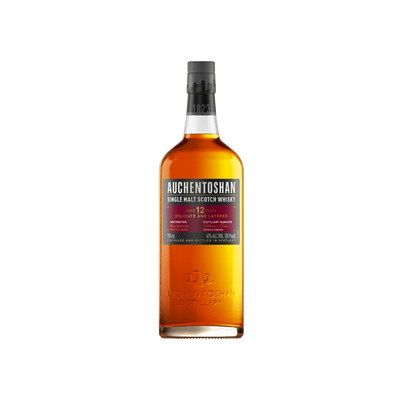Lowland Single Malt
What is Lowland Single Malt?
Lowland Single Malt is a distinct style of Scotch Whisky produced exclusively in Scotland's southern region, stretching from the Highland boundary line down to the English border. This whisky must be made from malted barley at a single distillery and aged in oak barrels for a minimum of three years to earn its designation. Lowland Single Malts are celebrated for their approachable, gentle character - typically lighter and more delicate than their Highland or Islay counterparts, with grassy, floral notes and a smooth, easy-drinking profile that makes them perfect entry points into the world of single malt whisky.
Learn More About Lowland Single Malt
What makes Lowland Single Malt unique?
Lowland single malts stand apart from their Highland, Speyside, and Islay cousins through their distinctively gentle, approachable character that comes from the region's mild climate and traditionally triple-distilled production methods. These whiskies typically showcase lighter, more delicate flavors with grassy, floral notes and subtle honey sweetness, making them perfect gateway drams for newcomers while still offering plenty of complexity for seasoned drinkers. The absence of peat influence and the region's focus on clean, elegant distillation creates whiskies that let the pure essence of malted barley shine through without the smoke, brine, or intense fruit notes found in Scotland's other whisky regions.
How is Lowland Single Malt made?
Lowland single malt whisky starts with malted barley that's mashed with water, fermented with yeast, and then distilled in copper pot stills—typically twice, though some distilleries use triple distillation for extra smoothness. The new-make spirit must be aged in oak casks for a minimum of three years within Scotland's Lowland region, which stretches from the southern border up to an imaginary line running from Greenock to Dundee. The gentle climate and traditional production methods of this region tend to produce whiskies known for their approachable, often lighter character compared to their Highland, Speyside, and Islay cousins.
How do you drink Lowland Single Malt?
Lowland Single Malts shine brightest when sipped neat or with just a splash of water to open up their gentle, grassy flavors – their approachable character makes them perfect for whisky newcomers who want to appreciate Scotch without getting knocked over by peat smoke. While purists might cringe, these lighter whiskies actually work beautifully in refined cocktails like a Whisky Sour or Rob Roy, where their subtle honey and citrus notes can still peek through the mix. The mild, elegant nature of Lowland whiskies makes them ideal for quiet evening conversations or as a gentle introduction to single malt appreciation, especially during spring and summer when their fresh, clean profile feels most at home.
How do I choose a good Lowland Single Malt?
When selecting a Lowland single malt, look for distilleries like Glenkinchie, Auchentoshan, or Ailsa Bay that showcase the region's signature gentle, grassy character with notes of honey, citrus, and fresh herbs. If you're planning to mix cocktails, opt for younger expressions (8-12 years) that won't get overwhelmed by other ingredients, while keeping the pricier aged bottles for neat sipping where you can appreciate their subtle complexity. The key is matching the whisky's delicate profile to your intended use—Lowlands play beautifully in whisky sours and highballs but can disappear in spirit-forward drinks like Manhattans.
Nutritional Information
Typical Calorie Range per Ounce: 64-70 calories
Typical Carbohydrate Range per Ounce: 0-0.1 grams
Typical Sugar Range per Ounce: 0 grams
Typically Gluten Free: No
While the distillation process removes most gluten proteins, Lowland Single Malt Scotch whisky is made from malted barley and may contain trace amounts of gluten. Those with celiac disease or severe gluten sensitivity should consult their healthcare provider and always check detailed product information from the specific distillery to confirm gluten-free status, as manufacturing processes can vary between producers.
Scrolled this far? Your reward? Lowland Single Malt Trivia!
- The "Triple Distillation Secret": While most Scottish whiskies go through two distillations, several famous Lowland distilleries like Auchentoshan and Hazelburn use triple distillation—a technique more commonly associated with Irish whiskey. This extra step creates an unusually smooth, almost silky texture that makes Lowland malts perfect gateway whiskies for newcomers, but also incredibly sophisticated for seasoned drinkers.
- Grain Whisky's Birthplace: The Lowlands gave birth to the continuous still in 1831 when Aeneas Coffey perfected his column still design at the Port Dundas distillery in Glasgow. This invention didn't just change Scottish whisky—it transformed spirits production worldwide. Ironically, this region known for gentle single malts created the technology that makes mass-produced grain whisky possible.
- The Mysterious "Lowland Line": The official boundary between Lowland and Highland whisky isn't based on geography or elevation—it follows an imaginary line drawn for tax purposes in 1784. This arbitrary border runs from Greenock to Dundee, meaning some distilleries sitting at higher elevations than their "Highland" neighbors are technically classified as Lowland producers.
- Industrial Camouflage Champions: During World War II, Lowland distilleries became masters of disguise. Glenkinchie painted fake bomb damage on their buildings and scattered rubble around the property to fool German reconnaissance planes. Meanwhile, several distilleries near Glasgow were converted to produce industrial alcohol for munitions, with workers living on-site to protect the facilities from air raids.
- The Breakfast Whisky Tradition: Victorian gentlemen in Edinburgh and Glasgow routinely drank Lowland single malt with their morning porridge—not as a mixer, but as a palate cleanser between spoonfuls. This practice was so common that several Lowland distilleries marketed their whiskies specifically as "breakfast malts," promoting their light, grassy character as the perfect companion to Scotland's national breakfast dish.
Higher-proof spirits can be intense. Mix carefully, taste thoughtfully, and enjoy responsibly.
Gift message (optional)

